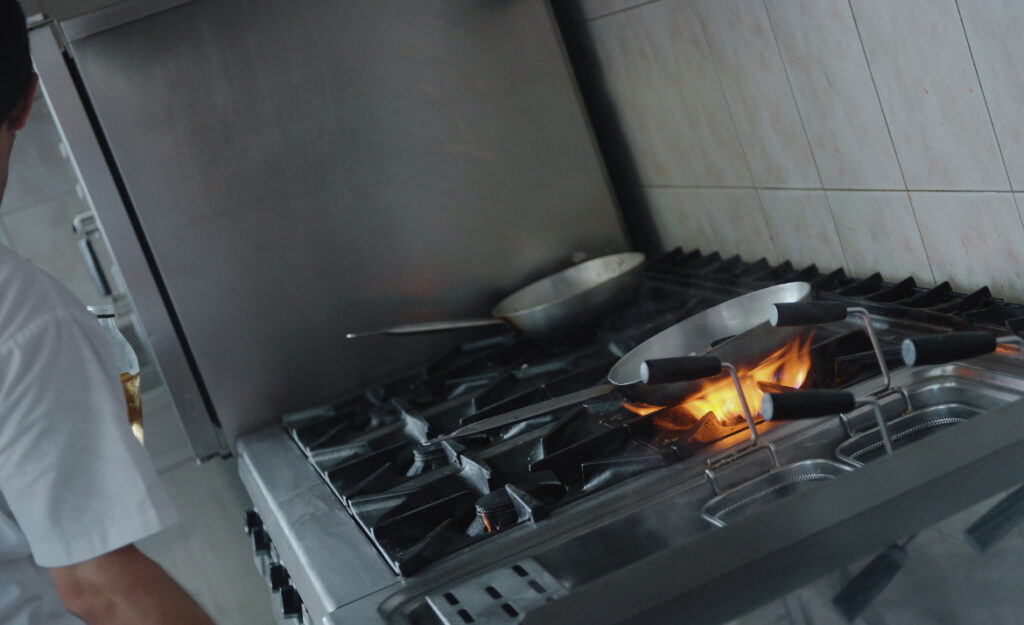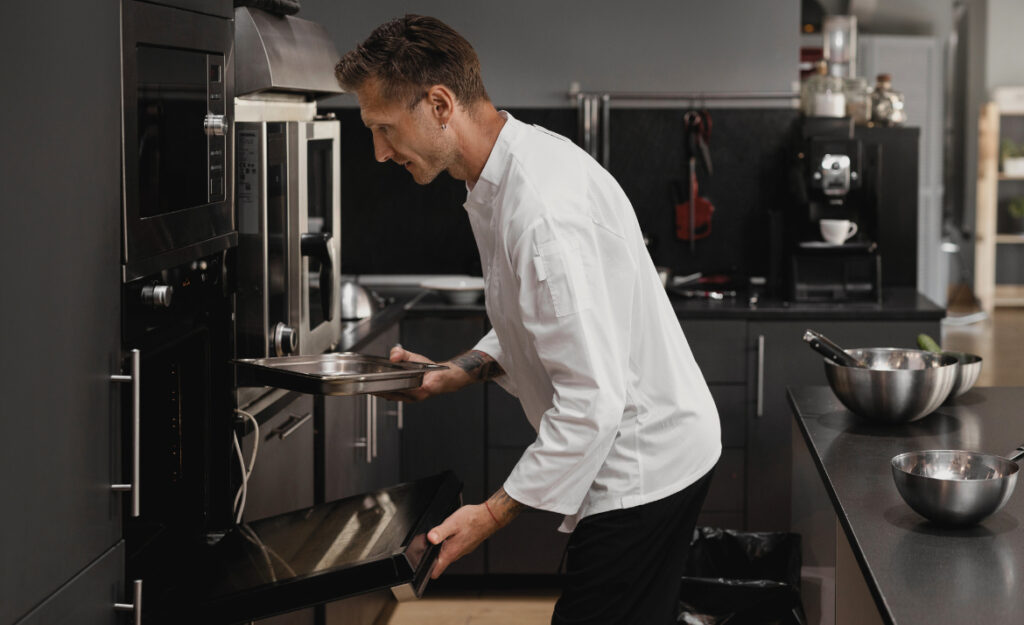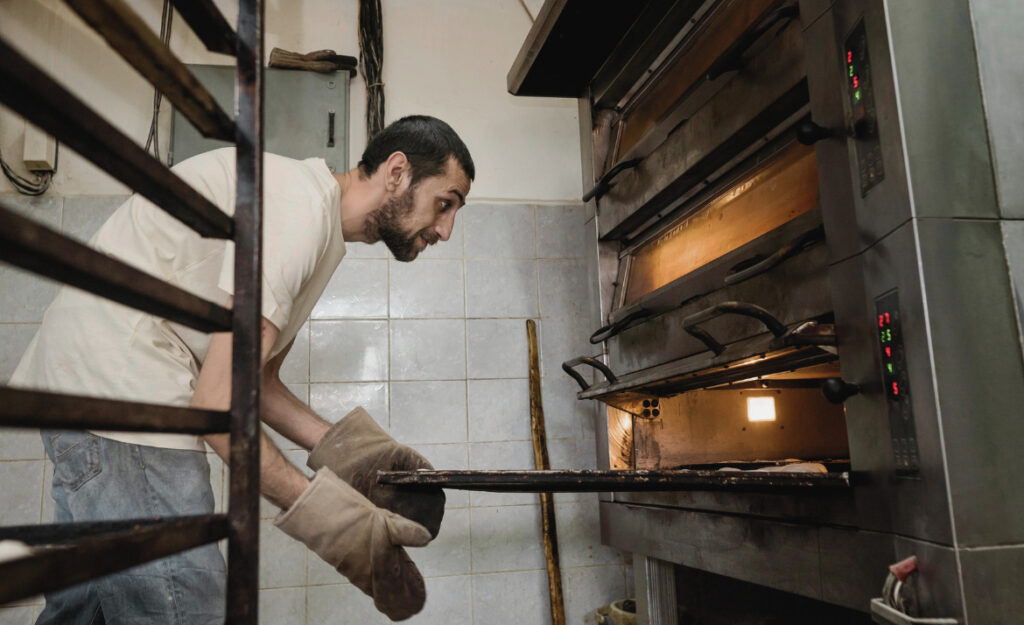
Every industrial kitchen professional recognizes the telltale sign: that faint haze that signals smoke buildup in stoves. Managing air quality and efficiency relies on understanding exactly what triggers these episodes and the best methods for control. When you grasp why smoke collects, you empower your kitchen’s workflow and health.
Smoke isn’t just a comfort issue—it affects safety, compliance, and kitchen atmosphere. As air and smoke recirculate, they can linger and impact everything from food flavors to staff well-being and machinery maintenance. Proactive attention transforms workspaces for the better.
This article explores practical, straightforward ways to prevent smoke buildup in stoves using quick, reliable adjustments. You’ll gain actionable insights, sample checklists, and decision-support tools tailored for the realities of busy commercial environments.
Assessing Stove Performance for Immediate Air Improvements
Effective smoke reduction starts by identifying key performance signs and acting promptly. Recognizing what to look for helps staff intervene before haze clouds the air.
Assessing temperature, airflow, and fuel type produces clear signals about when intervention is needed, eliminating the guesswork and keeping kitchens on track throughout every shift.
Telltale Smoke Cues in Industrial Kitchens
Operators notice smoke traces near cooktops, especially during long prep cycles. When staff say, “It smells sharper than usual,” that real-world cue signals airflow isn’t optimal.
Regularly spotting windows or bright lights through drifting haze means immediate action is necessary before health and compliance are affected. Don’t wait for alarms; trust visual and scent-based cues from staff.
When staff lean back from vent hoods or prop open doors, it signals discomfort that demands practical adjustment of stove settings or airflow to restore comfort quickly.
Documenting Issues for Consistent Troubleshooting
Scenarios where chefs jot down “smoke during sears” or record oven backdraft times on a log allow for pattern spotting. Document every instance for strategic planning.
Examples include marking down when cleanup crews wipe sticky residues or when fire alarms sound unexpectedly. Use the collected notes to check stove seals and vent mechanisms for gaps.
Noticing staff coughing or pausing to fan smoke off plates lets you date and analyze these moments, forming the backbone of improved stove and vent maintenance plans.
| Performance Metric | Optimal Range | Smoke Warning Sign | Recommended Next Step |
|---|---|---|---|
| Stove Surface Temp | 350-475°F | Temp spikes or uneven heat | Adjust burners or service thermostat |
| Ventilation Speed | 90-120 CFM/sec | Slow or noisy fan | Clean filters or check ducts |
| Combustion Residue | Minimal, clear flame | Smoke with yellow tinge | Switch to cleaner fuel |
| Grease Build-up | No visible residue | Sticky hood surfaces | Schedule deep cleaning |
| Door Seal Integrity | Fully closed, tight | Visible gaps or air leaks | Replace gasket or adjust hinges |
Fine-tuning Airflow Components for Steadier Results
Managing kitchen smoke means adjusting the correct airflow components quickly. Learn which settings to tweak, and when, based on real kitchen patterns—not just generic advice.
Many operations resolve prevent smoke buildup in stoves simply by refining daily routines with tangible, step-by-step practices that respond to changing kitchen conditions.
Checklist for Airflow Adjustments
Following an actionable checklist cuts response time and produces visible results fast. Real examples show how staff can shift their focus and improve kitchen climate.
- Confirm hood vents are fully open before each shift. This ensures immediate removal of smoke at the source—before it escapes into the workspace.
- Test exhaust fan controls every morning and after large batch cooking. Reliable on/off response is vital to preventing heavy smoke buildup.
- Adjust damper settings during meal rushes. Open wider during peak times; close slightly during slack periods for efficient airflow and safety.
- Remove removable baffles or clean filters as part of daily closing. Clogged particles force smoke into the kitchen. Hand-inspect for grease, rinse, and replace immediately.
- Record changes in vent performance on the maintenance log, such as unusual noises, odors, or visible backdrafts. Timely notes accelerate repairs and minimize downtime.
Consistent application of these steps rapidly reduces smoke incidents, supporting both productivity and compliance with kitchen safety regulations.
Scenarios for Human-Centered Adjustments
When a line cook remarks, “The vent sounds weak,” the supervisor might pause prep, flip the switch, and listen for a strong whir. If it’s faint, cleaning or mechanical checks follow.
- Respond to tingling eyes or coughing among staff by opening vents briefly and reducing heat until the air clears. Direct action addresses comfort and prevents longer-term irritation.
- If smoke lingers after frying sessions, open doors to create a cross-breeze, evacuating the haze while maintaining food safety protocols and minimizing disruption.
- Use real dialogue—“Turn the damper another notch”—to make adjustments visible and repeatable. This habit creates a culture of quick, targeted airflow fixes.
- Keep spare vent and fan parts on hand so staff can act immediately if primary systems clog or fail. This limits downtime and ensures critical operations aren’t interrupted.
- Introduce micro-breaks in heavy prep cycles for quick vent checks, reducing staff fatigue and keeping kitchens running smoothly through rush periods.
Each small, intentional adjustment leads to measurable differences in air quality by the end of every shift, so teams see clear value and stay motivated to maintain standards.
Synchronizing Cleaning Cycles with Kitchen Operations
To catch smoke issues before they escalate, coordinate targeted cleaning cycles with daily workflows. A well-timed approach keeps prevent smoke buildup in stoves on autopilot.
When deep cleans dovetail with shift changes, staff notice improved air quality and less downtime, confirming that structure pays off over improvisation.
Pairing Cleaning Routines for Impact
Front-of-house managers schedule surface wipe-downs on the hour, while back-of-house crews deep-clean vent grates as soon as grill work closes. This coordinated effort slashes airborne grease and lingering smoke in real time.
Prep cooks handle splash guards and range surrounds immediately after raw protein prep, nipping residue accumulation in the bud and making future deep cleans far easier.
Using a brief timer on mobile devices during cleaning tasks adds consistency, so no step is rushed or overlooked. As routines become ingrained, teams work faster together and see tangible air clarity by shift end.
Boosting Accountability Through Shared Logs
Posting cleaning logs beside each workstation encourages open communication. Anyone noticing extra smoke simply logs it, making patterns visible for supervisors and reducing minor complaints from escalating.
When someone logs “vent clog 7 p.m.,” the next crew checks for buildup before firing up the line. That moment-by-moment sharing closes the feedback loop and drives proactive care.
By making log entries a badge of honor—perhaps rewarding consistent diligence—kitchen managers create a community-wide focus on air quality, dramatically reducing smoke events and improving overall workflow.
Responding to Fuel and Cooking Method Variables
Operators gain substantial control when they recognize how fuel types and cooking styles impact prevent smoke buildup in stoves. Purposeful choices here mean fewer unwanted surprises mid-shift.
If teams articulate “This batch always smokes more,” they can pivot to cleaner fuel or adapt prep processes immediately, sidestepping lingering haze and compliance issues.
Understanding Fuel Impact with Real Cases
Gas-powered stoves emit steadier flames when burners are free from residue. Chefs quick to spot yellow flames swap gas or clean jets, ensuring consistent burns and minimal smoke.
Switching from solid wood to compressed pellets in smokers produces a cleaner burn and easier cleanup for teams during switchovers. Articulating, “Let’s re-up the pellet supply,” signals a plan to boost air quality on high-demand days.
Staff note, “Vegetable oil fries burn less than lard,” and record the differences after menu changes. These observations accumulate, guiding future decisions for repeatable, low-smoke output.
Pinpointing Methods that Reduce Smoke Production
Braising or steaming protein instead of pan-searing dramatically drops airborne particles around cooktops. Teams that rotate prep methods weekly record lower overall smoke readings, showing a direct link.
Timing is critical: slicing vegetables after high-heat sauteing clears residual heat and prevents smoking from lingering oil. Scripts like, “Prep veg at 2:30, right after the hood cools,” create predictable, smoke-free routines.
Staff who let pans heat undisturbed before adding oil consistently report less initial smoke. This aligns with the analogy of preheating like warming a car before driving—consistent starts create smoother, safer kitchens.
Maintaining Ventilation Integrity for Long-term Air Clarity
Keeping vent systems in premium condition is a top priority, as functional integrity is central to prevent smoke buildup in stoves and sustaining regulatory compliance.
Regular checks and immediate repairs take the guesswork and stress out of daily shift work, building trust among teams and ensuring predictable outcomes.
Routine Inspection Protocols That Work
Begin-of-day inspections pair visual checks for residue with hands-on filter removal. Staff feel for sticky or heavy filters—if caught early, a rinse gets them ready for the next cycle.
Using a flashlight along duct seams flags oil leaks before they grow. Comments like, “See that drip?” transform small discoveries into actionable fixes, implementing continuous improvement naturally.
Teams who stick to weekly fan belt checks, swapping worn ones out as needed, see more efficient airflow and a significant drop in after-hours smoke complaints. Consistency adds up.
Empowering Teams with Immediate Feedback Loops
Real-time communication closes the gap between smoke incidents and fast adjustments. Making feedback a daily norm empowers every staff member to take action.
Supervisors provide immediate acknowledgment—”Good catch! Open that damper”—and make behavior modeling visible, with instructions repeated until every shift owns the process.
Encouraging Proactive Dialogue on the Line
Break the habit of hiding discomfort. When team members voice, “Too much haze,” shift leads enact changes on the spot, demonstrating care and valuing staff safety as a clear priority.
Maintaining suggestion cards or QR-coded feedback links by each station gathers ideas for improvement. “Try this next time” examples become part of daily log reviews, building a toolkit everyone can draw on.
Shared success stories—”Yesterday, the air cleared fast after vent adjustment”—encourage buy-in, making every staff member an advocate for optimal air quality and problem prevention.
Conclusion: Reliable Adjustments Drive Clear Air in Industrial Kitchens
Mastering the small, consistent habits outlined here makes prevent smoke buildup in stoves achievable for every industrial kitchen. Review, adjust, and document the processes until they become second nature on every shift.
Maintaining air clarity directly impacts both short-term comfort and long-term compliance. When teams see daily results, commitment to these standards becomes part of workplace pride and operational excellence.
Keep listening, adjusting, and documenting—every improvement is a step toward safer, clearer kitchens and better workplace health for every member of your team.
Frequently Asked Questions
How often should industrial kitchen stove filters be cleaned?
Stove filters should be cleaned daily in high-traffic kitchens and after every large cooking cycle in smaller operations. This keeps airflow steady and prevents blockages that cause smoke backup. Consistent cleaning averts grease accumulation and protects the vent system.
What is the first adjustment to make if smoke suddenly increases?
Open all available vent hoods and exhausts, confirm they are operating at full power, and reduce the stove’s heat output temporarily. If the situation doesn’t improve within minutes, pause operations for a quick inspection of filters, baffles, and airflow paths.
Which fuels produce the least smoke in commercial stoves?
Refined natural gas and electric elements create the cleanest burns, while hardwoods and heavy oils produce more visible emissions. Switching to cleaner fuel types not only keeps the air clearer but also simplifies cleanup and ongoing maintenance.
How can staff detect small smoke problems before they grow?
Encouraging real-time reporting—smell, sight lines, and comfort cues—enables early intervention. Staff can note subtle odors, hazy vision near lights, or throat irritation. Quick documentation and checklists add another layer of protection for the team and equipment.
Do regular cleaning and feedback loops really prevent smoke buildup long-term?
Yes. Documented routines and immediate feedback reinforce daily best practices, empowering staff to notice, adjust, and resolve smoke buildup issues before they escalate. This process builds a sustainable, healthy kitchen environment over time for all shifts.



